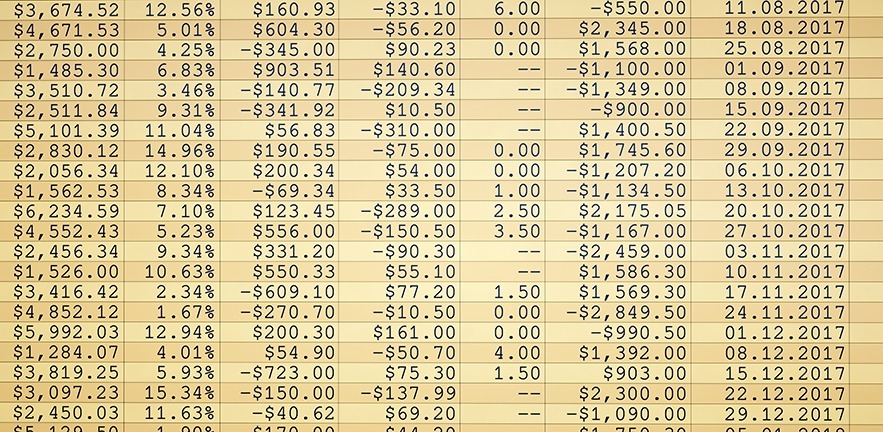by Dr Alex S.L. Tse, Research Associate, Cambridge Centre for Finance and Cambridge Endowment for Research in Finance

A few weeks ago I attended the 10th World Congress of the Bachelier Finance Society in Dublin. To those who do not know, this event is arguably the largest mathematical finance conference which only takes place once every two years. I gave a presentation on portfolio selection under transaction costs but today I am not going to talk about my own research (still, the interested ones can refer to this previous post!). In this blog entry I would like to give a brief overview on two topics which, in my opinion, have received considerable attention from both academics and practitioners during the conference.
Rough volatility
A cornerstone of modern asset pricing theory is the celebrated Black-Scholes option pricing formula. As elegant as the solution appears to be, it is well known that the underlying model is not consistent with real data. If we invert the formula to compute the volatility level of a stock implied by a set of option prices of different strikes and maturities, we will see that the implied volatilities obtained are not constant across the spectrum of options although they are all written on the same asset. This casts doubt on the modelling assumption that asset return is normally distributed with constant volatility over time. Consequently, stochastic volatility (SV) models have been widely adopted where the variance of asset return is now random and is driven by another Brownian motion. Nonetheless, most SV models still cannot generate volatility surfaces which are satisfactorily consistent with the stylised facts of the observed surfaces. For example, traditional SV models usually produce volatility skews which are inversely proportional to time-to-maturity but in reality the skews are decaying much slower along the maturity dimension.
In a rough volatility model, volatility is not driven by a simple Brownian motion but instead a fractional Brownian motion with Hurst index H<0.5. The key property of a fractional Brownian motion is that the variance of its stochastic innovation in a time interval [s,t] is |t-s|^2H. A smaller value of H thus leads to a slower decay of variance when the time interval collapses and thus the process looks “rougher”. This feature enables a rough volatility model to deliver a term structure of volatility skew with power-law decay over maturity, which is much more consistent with the empirical data. There are many interesting research questions associated with rough volatility models where examples include the microstructural foundations of rough volatility, empirical estimation techniques, implications to exotic derivatives pricing and etc.
Robust finance
The traditional route to solve a theoretical finance problem is the following: 1) postulate a model; 2) write down and solve the resulting optimisation problem; 3) deduce economic predictions of interests based on the model solutions. The quality of the predictions of course can only be as good as the quality of the underlying model. The painful lesson of the 2008 financial crisis had already shown us how bad things could go when we relied on poorly specified models to make important economic decisions. The general theme of robust finance is to work with scenarios in which the underlying models are not perfectly known.
There are many variations of such problems. One simpler framework is parameter uncertainty where a model is fixed upfront but we only know the possible range of its parameters rather than their precise values. The decision criteria in this case could be for example the “max-min” rule where an agent adopts the strategy maximising the worst payoff among all possible parameters of the model. Solving problems of this kind can be theoretically challenging since the objective functions often exhibit very sophisticated convexity structure or dynamic inconsistency, and as such new and subtle economic phenomena could arise.
Even if parameter uncertainty has been taken into consideration, an inevitable step still involves specifying a model at the beginning and hence the whole exercise is still prone to model misspecification risk. A natural question is the following: is it possible to bypass all the modelling assumptions and still deduce meaningful insights for a particular economic problem? The answer turns out to be positive, and this subject of research is known as model-independent finance. Let’s take option pricing as an example again. When we talk about rough volatility previously, we have seen how a model can be enhanced to generate option prices which are consistent with the observed volatility surfaces. Then this carefully constructed and calibrated model can be taken to valuate a more complicated derivative product written on the same asset. Model-independent finance is about the reverse procedure – given the prices of European options across all strikes and maturities, specify the entire class of models (subject to some minimal requirements such as continuity of price process) which can produce option prices matching all the given data. Each model in the class will give a different valuation and hedging strategy of the derivative product that we are interested in. By searching over this class of models, the most conservative pricing can be obtained without any modelling assumption and the corresponding robust hedging strategy can be established. Problems in model-independent finance have provoked very deep research in probability theories such as the Skorohod embedding problem, the coupling of stochastic processes and martingale optimal transport. I think it will be exciting to see how this research area shapes up and in particular how the theories developed can be utilised by policy makers such as risk authorities or regulators.


